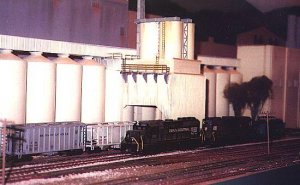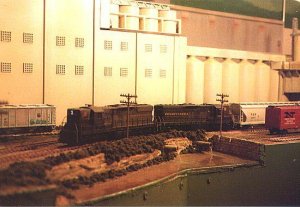I've seen some threads recently asking about train operations that go beyond simply running freights around the layout in circles. I'm no expert on realistic operations but one that I especially like is "train meets" when one train waits for another to go by before proceeding. This can be accomplished easily with DCC of course, or by wiring a siding as a seperate block from the main line so a train can sit there ("in the hole" as the popular RR phrase describes it) while the mainline is busy.
On my layout (pictured below) I have a siding near a cement plant that a local train can take before the through train headed by a piar of SD9s rolls by. After it passes, the local can continue the work of pulling covered hoppers onto the main and on to their next destination.
Anyone care to describe a favorite operation of their's?
Ralph
On my layout (pictured below) I have a siding near a cement plant that a local train can take before the through train headed by a piar of SD9s rolls by. After it passes, the local can continue the work of pulling covered hoppers onto the main and on to their next destination.
Anyone care to describe a favorite operation of their's?
Ralph



